Do you think only cast-iron cookware needs to be seasoned? You will be surprised to know that your most trusted stainless-steel cookware can (and should) be seasoned to attain a non-stick-like cooking surface. The objective of seasoning is to obtain a thin layer of coating on the surface of the cookware that will provide a small barrier between the cookware and what you put in it.
Seasoning stainless steel fills in the pores of the cookware with oil to create a smoother surface akin to non-stick. Food glides around more easily and less build-up occurs on the surface of a well-seasoned stainless-steel pan.
However, many users are wary of the intricate steps associated with seasoning. But you will be happy to know that seasoning stainless steel is comparatively easier than seasoning a cast iron cookware. All you need is your cooking vessel, some soap and water, oil with a high smoke point (vegetable, avocado, grapeseed oil), and paper towels!
- How to season the Pan?
- How to prevent it from sticking?
- What kind of food can we cook in a seasoned stainless-steel pan?
- FAQs about Induction cooktop
1. How to season the Pan?
Following are the steps and description that you can follow to get the seasoning done on the pan.
| Wash with warm water and soap | After cooking, wash your pan with soap and warm water. Scrub the pan with a dishrag or sponge to remove any food particles. Clean both the interior and exterior of the pan as thoroughly as possible. Allow the pan to air dry after rinsing it out with warm water. |
| To season your pan, choose an oil with a high smoking point. | To season your pan, choose an oil with a high smoking point. Seasoning your pan with sesame, vegetable, peanut, and soybean oil is a good idea. As you begin the seasoning procedure, an oil with a high smoking point will respond more readily to the heat and "stick" better to the pan. This helps to keep your seasonings in place longer and be more successful. |
| Add enough oil to the pan to coat the bottom thinly | For most pans, this will amount to roughly 2 tablespoons (30 ml) of oil. To distribute the oil throughout the pan, swirl it about. Aim to cover as much of the inside of the pan as possible so that it is equally seasoned for cooking. |
| Over medium heat, heat your pan for two minutes. | A medium heat setting is gentler on the pan and the oil, but it ensures that they heat up at an even rate. |
| After the oil begins to smoke out, take the pan off the heat. | The oil should get smoked out after about 15-20 minutes. Tiny wisps of smoke will curl up from the pan as the oil begins to thin out. It might take 3-5 minutes for this procedure to begin. Remove the pan from the heat and transfer it to a different burner right away. |
| Allow the oil to cool before using the pan. | Oil should be warm or at room temperature. You want the oil to be cold enough to avoid scalding your skin when you handle it. |
| Wipe the inside of the pan with a paper towel. | In circular motions, wad up the paper towel and wipe the pan in a circular pattern. This will not only sop up any remaining oil; it will also give the pan a brilliant shine. The shininess indicates that the pan has been sufficiently glossy and is now non-stick. |
2. How to prevent it from sticking?
Preheating your pan before cooking will guarantee that your pan and food are heated equally, preventing burned meals. It will take around 3-4 minutes for your pan to reach medium temperature, whether you're using an electric, induction or gas stove.
When using any pan, be careful not to set the burner too high. As the food cooks, it will stick to the pan if the cooking temperature is too high.
Before cooking, ensure the food item is at room temperature. Cold food will adhere to hot pans, resulting in scorching and a mess. Allow your meal to thaw in the refrigerator for 1 to 2 hours before using it so that it may rise to normal temperatures.
Don't fill the pan to capacity. When you fill your pan with more stuff than it can handle, the temperatures become uneven, and things stick. If you wish to cook several ingredients at once, use no more than two or three at a time, and space them out so they have their own section of the pan.
3. What kind of food can we cook in a seasoned stainless-steel pan?
Cook acidic, water-based foods, and sauces in your stainless-steel pan. Fruits, vegetables, tomato sauce, gravies, and broths are all wonderful things to prepare in a well-seasoned stainless-steel pan. Alternatively, you may use your pan to fry your eggs in the morning or sear a salmon steak for dinner. These sorts of meals are best prepared in stainless steel pans.
4. FAQs on Meyer Stainless Steel Cookware Range
Q: Why should I choose Meyer Stainless Steel?
A: Meyer stainless steel pans are excellent for those who want cookware that is both long-lasting and sturdy. An uncoated frying pan can last a lifetime if properly cared for and maintained.
Meyer pans are versatile enough to be used for a wide range of cooking methods, from browning and flambéing to stir-frying. Meyer pans are highly long-lasting due to their high-temperature resistance.
Uncoated frying pans are also fantastic for saucepans and other uses. For example, they're perfect for making tomato-based recipes.
Q: Why is Meyer stainless steel a sustainable range?
A: The pans are produced from high-quality stainless steel or nickel-free steel, encased in Meyer Select and three-layer structure in Meyer Trivantage. There are no hazardous chemicals used during the manufacturing of Meyer Stainless Steel Cookware. Stainless steel can be recycled time and again. Stainless steel, owing to its durability, extends the life of cookware.
Q: Is it necessary to use cooking oil or butter with an uncoated frying pan?
A: For optimum results, use oil or butter when cooking with an uncoated frying pan, or season it if necessary. Meyer pans with impressive construction help to distribute the oil or butter throughout the pan evenly.
Q: How do I heat an uncoated stainless-steel pan without scorching it?
A: To begin, heat the stainless-steel pan without oil or butter for a few minutes. If you add the oil or butter to the pan too soon or if it gets too hot, food will stick.
Here's how to tell whether the pan is hot enough: drop a few drops of water into it. When all the water has evaporated, raise the heat again. The temperature is ideal when the water droplets combine to form a single ball that rolls around the pan before evaporating. After that, remove any excess water and add some cooking oil.
Explore the best Stainless Steel cookware range here

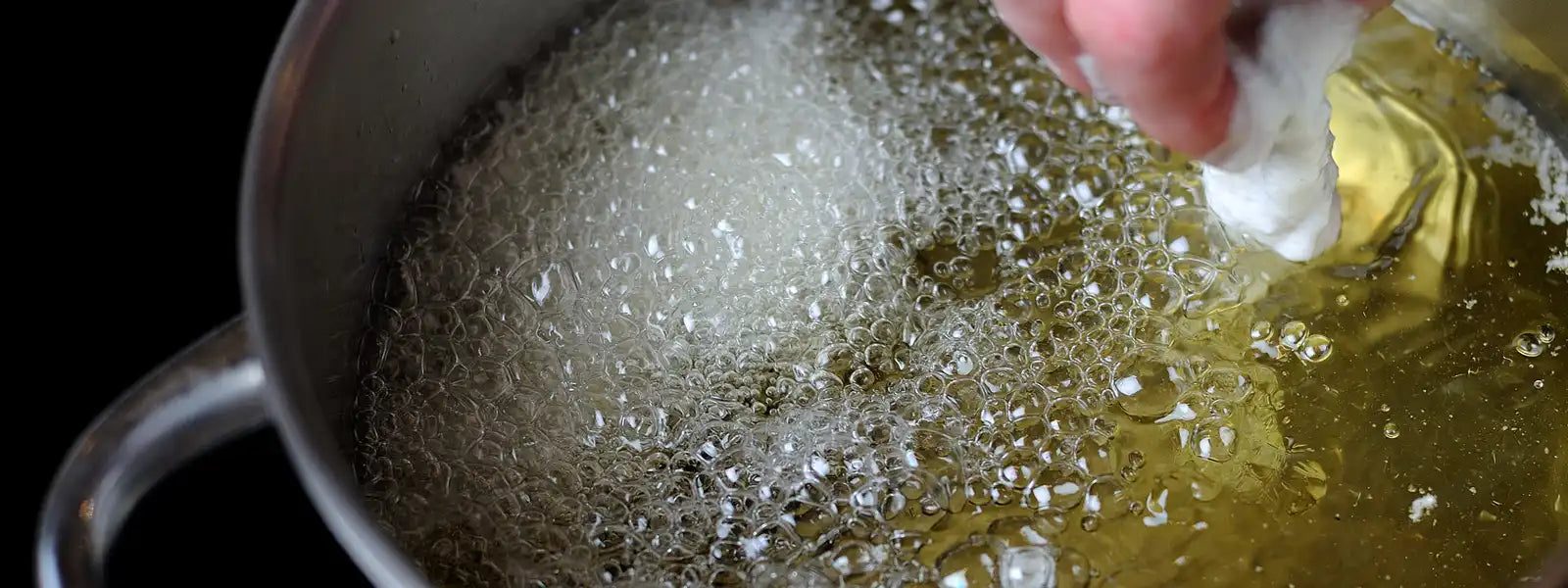
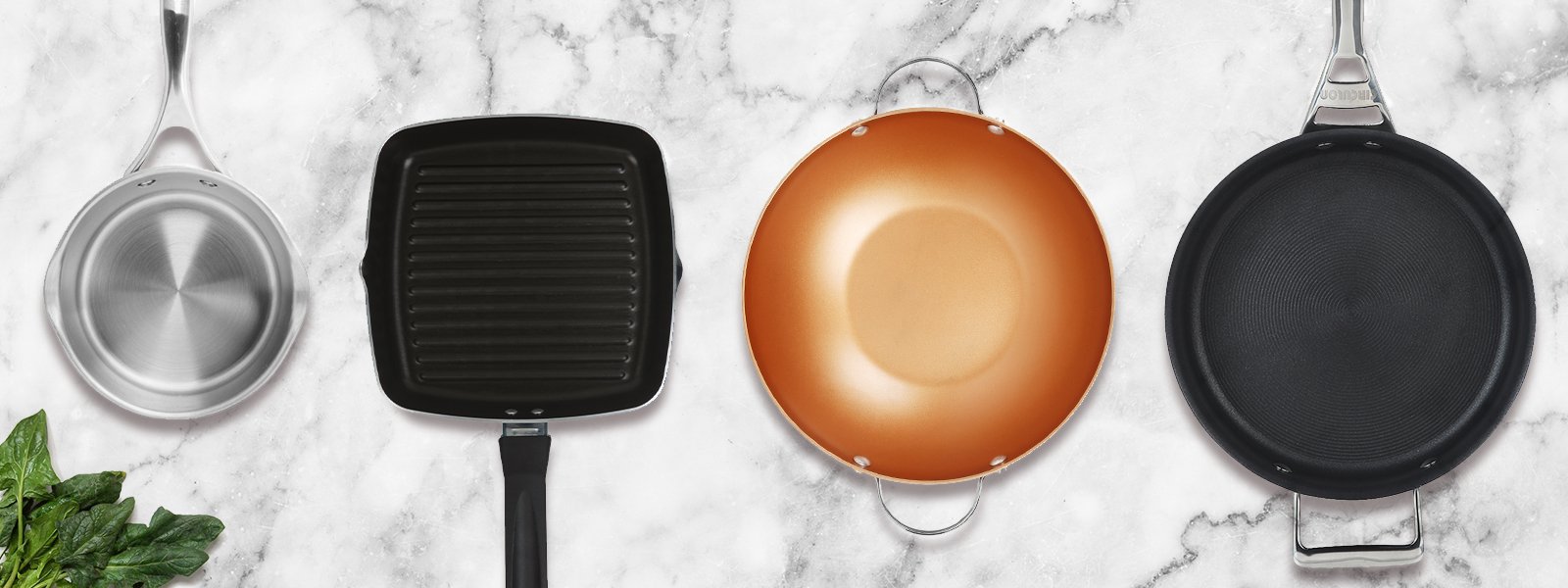
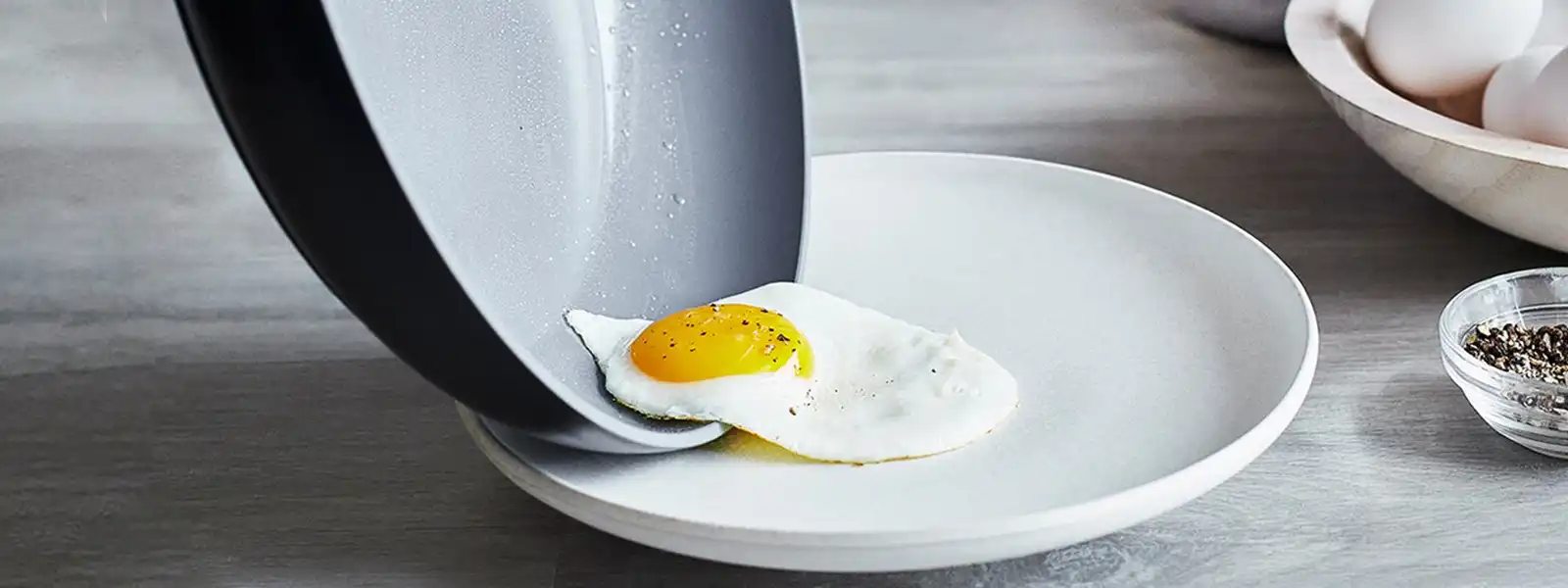
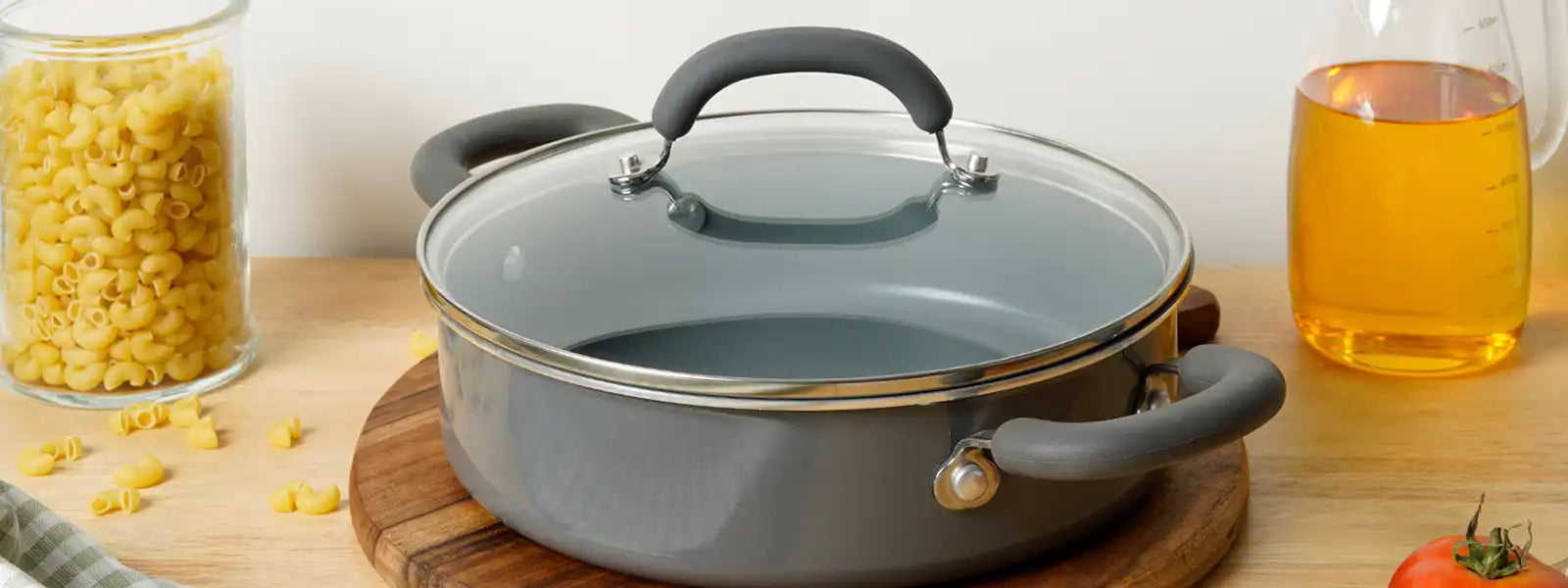

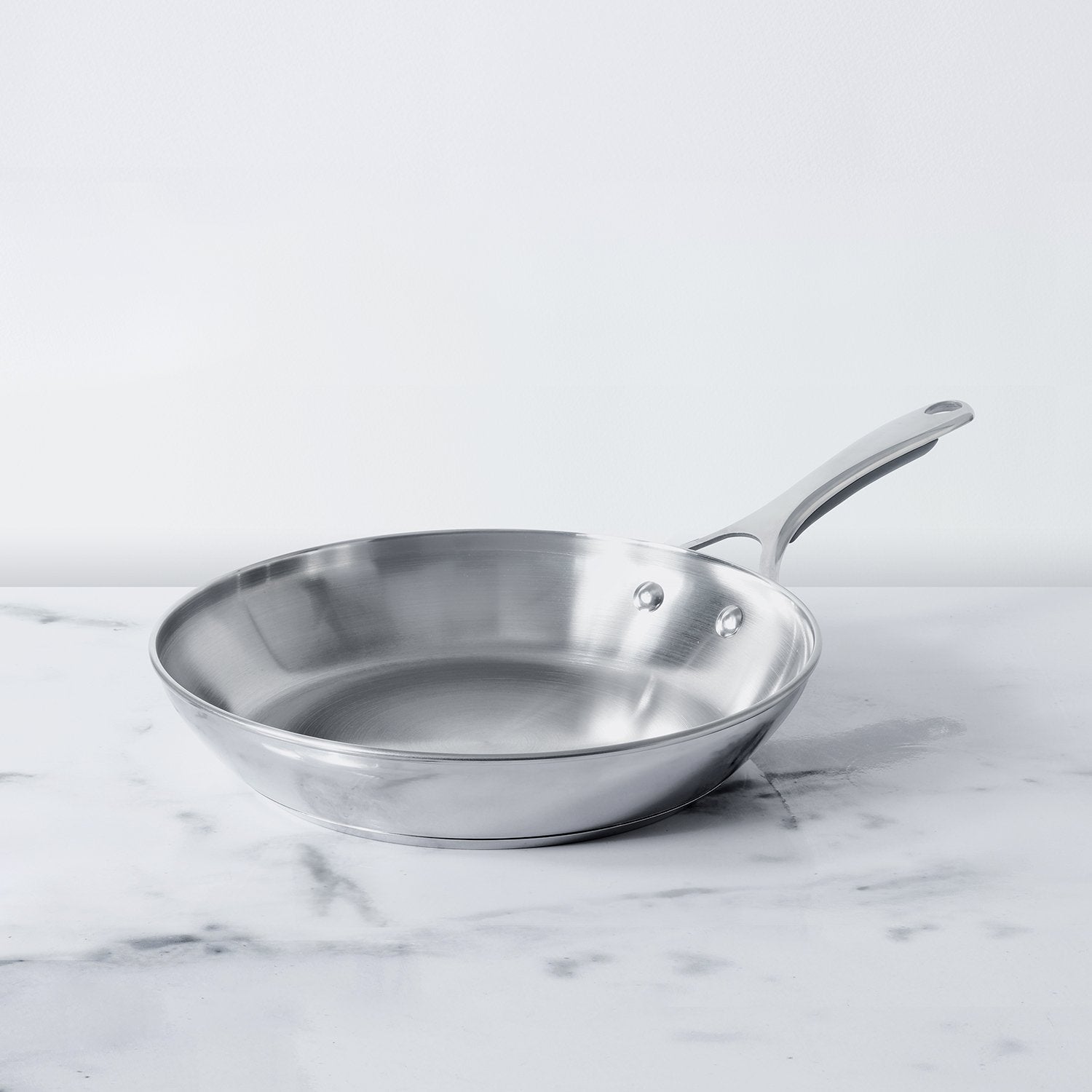
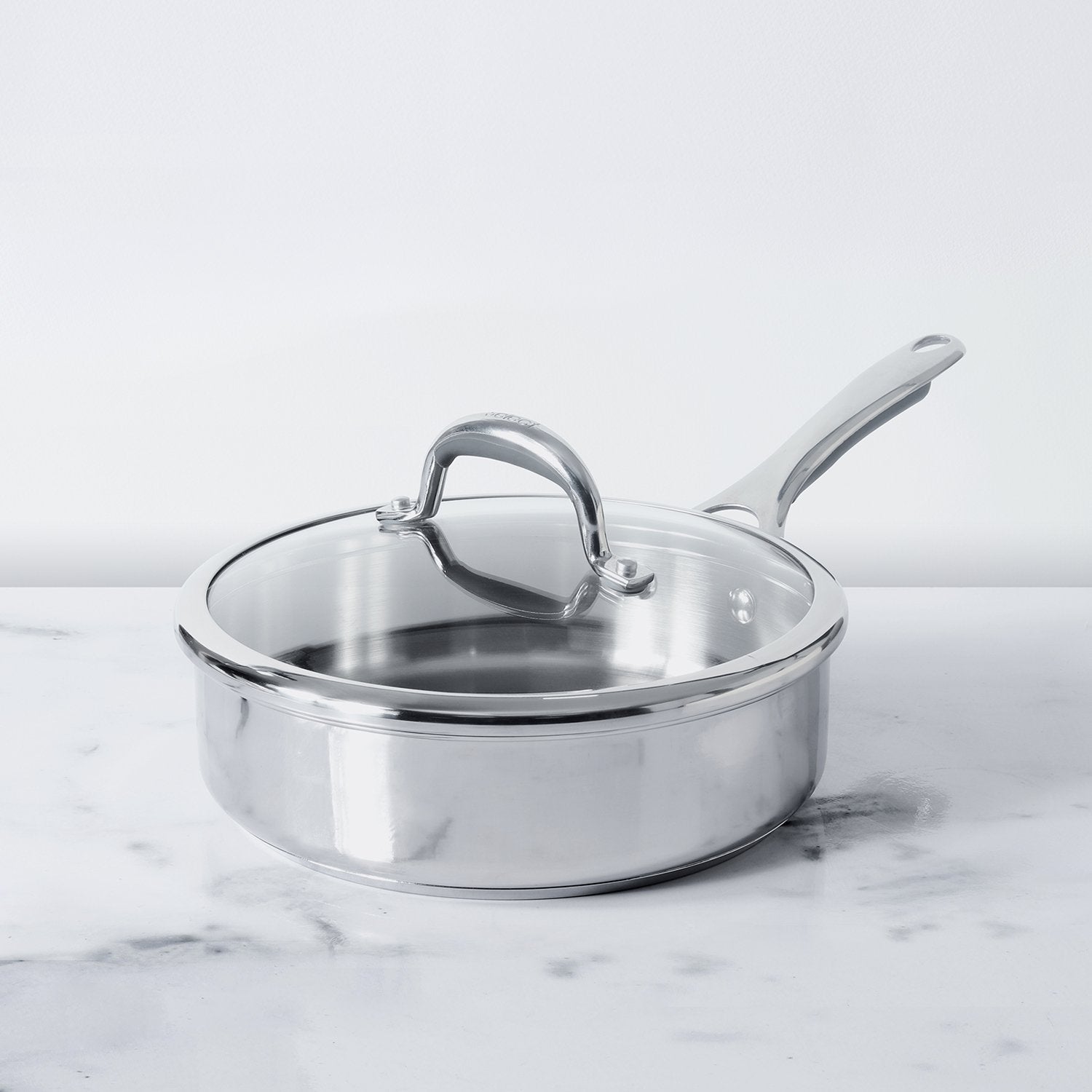




Leave a comment